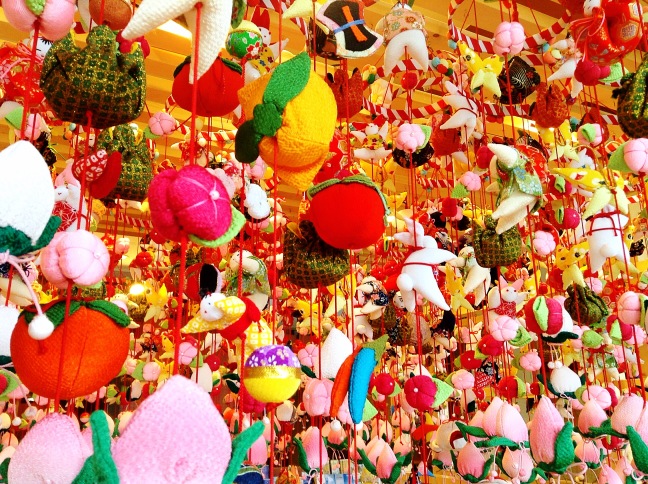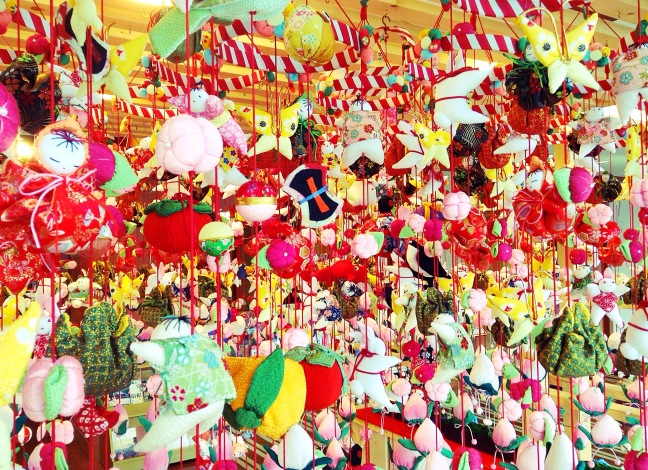 The Doll Festival (Hina Matsuri/Momo no Sekku/Girls’ Day) is just around the corner (well, March 3), and families with daughters—and hotels like Hakone’s Kowaki-en—are setting out their decorations.
The Doll Festival (Hina Matsuri/Momo no Sekku/Girls’ Day) is just around the corner (well, March 3), and families with daughters—and hotels like Hakone’s Kowaki-en—are setting out their decorations.
Families with daughters display a special set of dolls to bring happiness and health to their girls. The dolls represent the wedding procession of an emperor and empress of the Heian imperial court and are dressed in period kimono. A full set is comprised of 15 dolls, accessories like trees, lamps and food, and is arranged on a five- or seven-tiered display. The dolls vary in size, from quite small to about the size of Cabbage Patch dolls or even bigger. My mother-in-law’s childhood set was so big that it took an entire room in her family’s house to display. Unfortunately, no one is quite sure what happened to the set—WWII interrupted her childhood, so there is speculation her dolls were sold or lost. Too bad! (But then, where on earth would we store them?)
Most families nowadays, though, don’t have room for a full set (nor do they have the time and patience required to set it up and put it away), and so buy a two-doll set of just the emperor and empress, with maybe a few accessories.
The timing for setting up and putting away Hina dolls is important. Out of respect for the dolls, they should be set up mid-February, and taken down within a few days of the actual festival day. To leave the dolls out—forgetting them—is bad luck, and will result in daughters being married later in life—or so the legend goes. Even though (most) people no longer take stock in such superstitions, if you leave the dolls out too long, you risk having the old wives’ tale repeated ad nauseam until the dolls get dusted and wrapped. I might know this from experience…
Other decorations include tsurushibina, the hanging dolls and toys in the photos, which symbolize happiness for a family’s daughters. Not all families hang tsurushibina, though—Hina ningyo (dolls) definitely take centre stage.
Much like Japanese Christmas has its KFC and strawberry shortcake, and Oshogatsu its osechi ryori and—in my family at least—sukiyaki (boy, do I love that family tradition), Hina Matsuri has its own special foods: chirashi zushi (raw fish, veggies, egg, etc., served over sushi rice); special rice crackers called Hina-arare; diamond-shaped pink, white and green glutinous rice cakes called hishimochi; ushiojiru salty clam soup; and shirozake (unfiltered sake) for the grown-ups and amazake (sweet sake with either a low alcohol content or no alcohol content) for the kiddies. The foods are, for the most part, pink, green, white and/or yellow, the colours of Hina Matsuri.



One thought on “Hina Matsuri Tsurushibina”